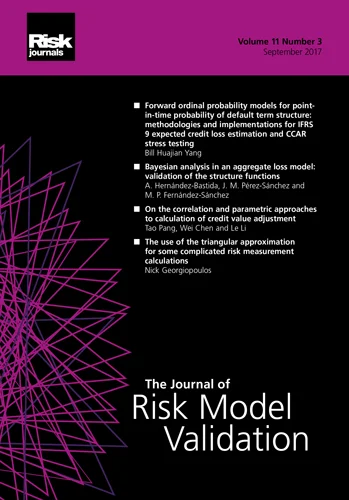Journal of Risk
ISSN:
1465-1211 (print)
1755-2842 (online)
Editor-in-chief: Farid AitSahlia

Need to know
- We show that randomized quasi-Monte Carlo and standard quasi-Monte Carlo methods outperform the Monte Carlo method in finance.
- Randomized quasi-Monte Carlo outperforms standard quasi-Monte Carlo showing faster and more stable convergence.
- Randomized quasi-Monte Carlo allows us to compute confidence intervals, providing a practical error bound.
- We find that Owen’s scrambling outperforms other randomized quasi-Monte Carlo methods such as digital shift.
Abstract
In many financial applications, the quasi-Monte Carlo (QMC) method based on Sobolʹ low-discrepancy sequences (LDSs) outperforms the Monte Carlo (MC) method, showing faster and more stable convergence. However, unlike Monte Carlo, QMC lacks a practical error estimate. The randomized QMC (RQMC) method combines the best of both methods. The application of scrambled LDSs allows us to compute the confidence intervals around the estimated value, providing a practical error bound. The randomization of Sobolʹ LDSs is done via two methods: Owen’s scrambling and digital shift. These are then compared considering the computation of Asian options and Greeks using the hyperbolic local volatility model. RQMC demonstrates a superior performance to the standard QMC, showing increased convergence rates and providing practical error bounds around the estimated values. The efficiency of the RQMC method strongly depends on the scrambling methods used. We recommend using Sobolʹ LDSs with Owen’s scrambling. The application of effective dimension-reduction techniques such as the Brownian bridge or the principal component analysis is critical in order to dramatically improve the efficiency of QMC and RQMC methods based on Sobolʹ LDSs.
Copyright Infopro Digital Limited. All rights reserved.
As outlined in our terms and conditions, https://www.infopro-digital.com/terms-and-conditions/subscriptions/ (point 2.4), printing is limited to a single copy.
If you would like to purchase additional rights please email info@risk.net
Copyright Infopro Digital Limited. All rights reserved.
You may share this content using our article tools. As outlined in our terms and conditions, https://www.infopro-digital.com/terms-and-conditions/subscriptions/ (clause 2.4), an Authorised User may only make one copy of the materials for their own personal use. You must also comply with the restrictions in clause 2.5.
If you would like to purchase additional rights please email info@risk.net








